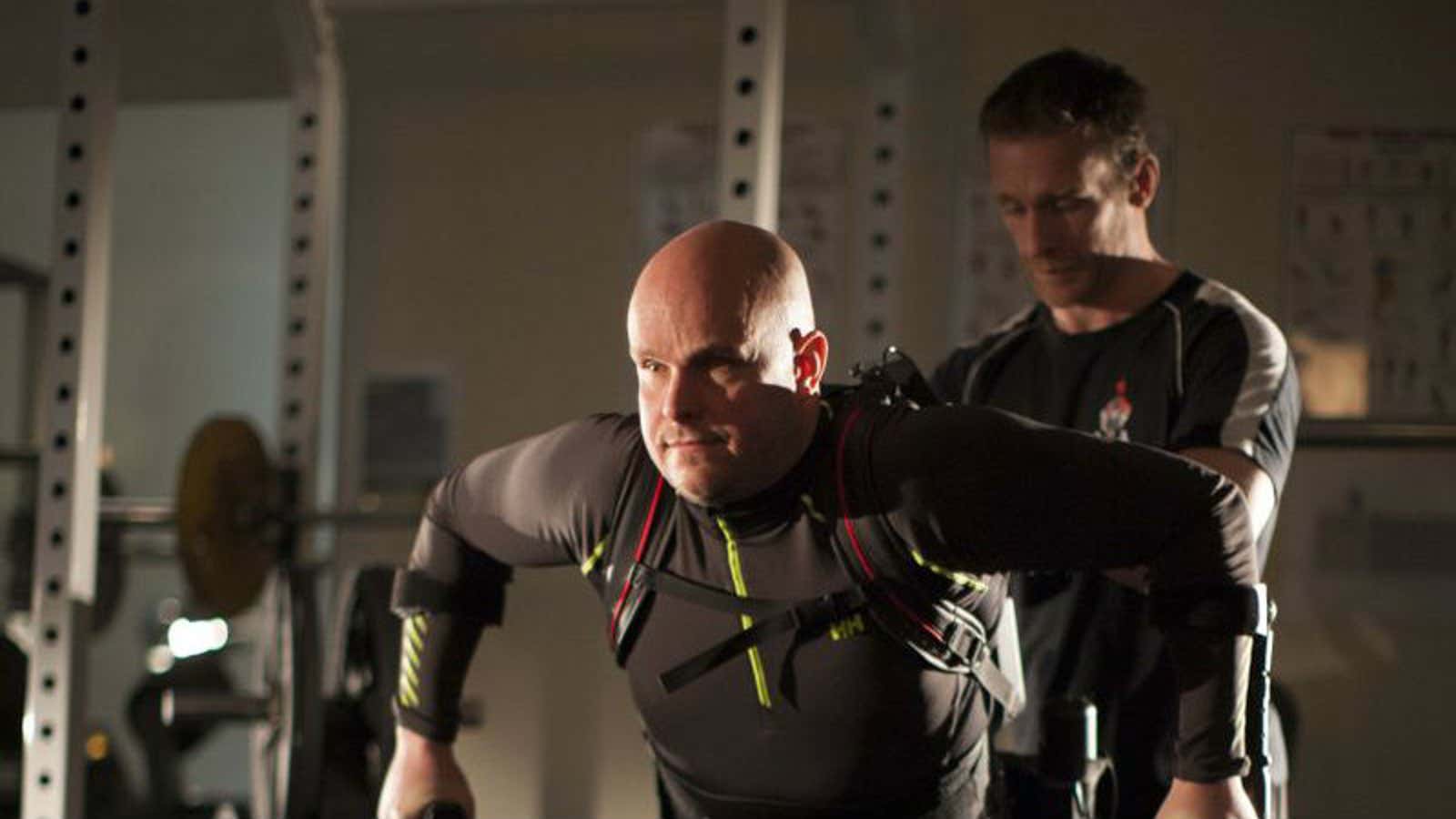Former adventure athlete Mark Pollock has been paralyzed from the waist down since he fell from a second story window in 2010. But after weeks of training with scientists at UCLA, the 39-year-old managed to take his first steps in four years.
Electrical pulses were used alongside the robotic exoskeleton to allow Pollock to walk. The electrical pulses triggered neural networks in Pollock’s spinal cord, and allowed him to “activate his leg muscles in a co-ordinated stepping motion,” according to the National Institute of Biomedical Imaging and Bioengineering (NIBIB).
Once inside the robotic exoskeleton, these muscle movements were enough to propel the suit into a stepping motion–in other words, Pollock was able to walk.
The exercises brought feeling to Pollock’s legs, creating “tension and tingling in his lower limbs.” Researchers also noticed perspiration on Pollock’s lower back and legs, which he hadn’t experienced since his injury.
“Stepping with the stimulation and having my heart rate increase, along with the awareness of my legs under me, was addictive. I wanted more,” Pollock said in a statement. “In the last few weeks of the trial, my heart rate hit 138 beats per minute. This is an aerobic training zone, a rate I haven’t even come close to since being paralyzed, while walking in the robot alone, without these interventions. That was a very exciting, emotional moment for me, having spent my whole adult life before breaking my back as an athlete.”
Reggie Edgerton, senior author of the research and a UCLA professor of integrative biology, said that the robotic exoskeleton should help others with paralysis.
“It will be difficult to get people with complete paralysis to walk completely independently, but even if they don’t accomplish that, the fact they can assist themselves in walking will greatly improve their overall health and quality of life,” he said. “For people who are severely injured but not completely paralyzed, there’s every reason to believe that they will have the opportunity to use these types of interventions to further improve their level of function. They’re likely to improve even more.”
